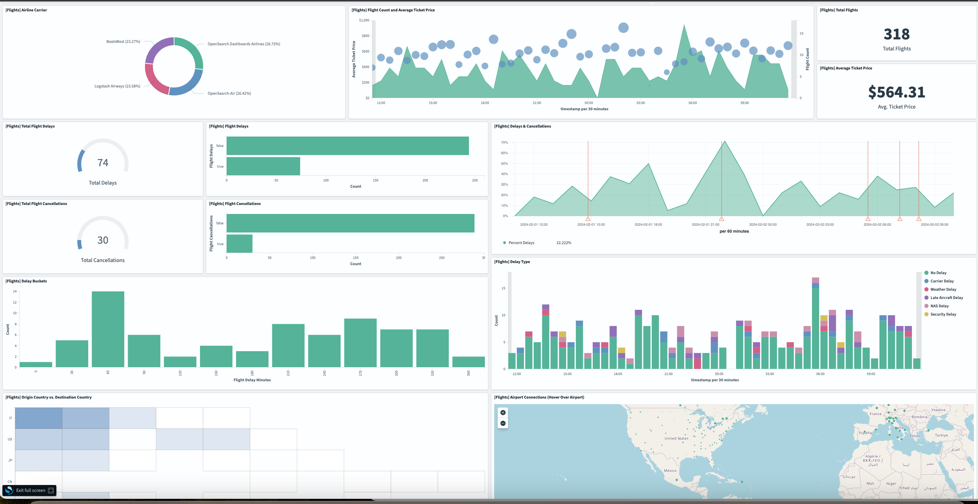AWS Big Data Blog
How ATPCO enables governed self-service data access to accelerate innovation with Amazon DataZone
ATPCO is the backbone of modern airline retailing, enabling airlines and third-party channels to deliver the right offers to customers at the right time. ATPCO’s reach is impressive, with its fare data covering over 89% of global flight schedules. In this post, using one of ATPCO’s use cases, we show you how ATPCO uses AWS services, including Amazon DataZone, to make data discoverable by data consumers across different business units so that they can innovate faster. We encourage you to read Amazon DataZone concepts and terminologies first to become familiar with the terms used in this post.
Manage Amazon Redshift provisioned clusters with Terraform
Amazon Redshift is a fast, scalable, secure, and fully managed cloud data warehouse that makes it straightforward and cost-effective to analyze all your data using standard SQL and your existing extract, transform, and load (ETL); business intelligence (BI); and reporting tools. Tens of thousands of customers use Amazon Redshift to process exabytes of data per […]
Migrate workloads from AWS Data Pipeline
AWS Data Pipeline helps customers automate the movement and transformation of data. With Data Pipeline, customers can define data-driven workflows, so that tasks can be dependent on the successful completion of previous tasks. Launched in 2012, Data Pipeline predates several popular Amazon Web Services (AWS) offerings for orchestrating data pipelines such as AWS Glue, AWS […]
Transition from Amazon CloudSearch to Amazon OpenSearch Service
At AWS, we are constantly innovating and evolving our services to meet the ever-changing needs of our customers. In this post, we want to help you understand the differences between Amazon CloudSearch and Amazon OpenSearch Service, and how you can transition to OpenSearch Service. Comparing Amazon CloudSearch and Amazon OpenSearch Service CloudSearch is a fully […]
Configure SAML federation with Amazon OpenSearch Serverless and Keycloak
Amazon OpenSearch Serverless is a serverless version of Amazon OpenSearch Service, a fully managed open search and analytics platform. On Amazon OpenSearch Service you can run petabyte-scale search and analytics workloads without the heavy lifting of managing the underlying OpenSearch Service clusters and Amazon OpenSearch Serverless supports workloads up to 30TB of data for time-series […]
How ActionIQ built a truly composable customer data platform using Amazon Redshift
This post is written in collaboration with Mackenzie Johnson and Phil Catterall from ActionIQ. ActionIQ is a leading composable customer data (CDP) platform designed for enterprise brands to grow faster and deliver meaningful experiences for their customers. ActionIQ taps directly into a brand’s data warehouse to build smart audiences, resolve customer identities, and design personalized […]
Streamline your data governance by deploying Amazon DataZone with the AWS CDK
Managing data across diverse environments can be a complex and daunting task. Amazon DataZone simplifies this so you can catalog, discover, share, and govern data stored across AWS, on premises, and third-party sources. Many organizations manage vast amounts of data assets owned by various teams, creating a complex landscape that poses challenges for scalable data […]
Migrate from Apache Solr to OpenSearch
OpenSearch is an open source, distributed search engine suitable for a wide array of use-cases such as ecommerce search, enterprise search (content management search, document search, knowledge management search, and so on), site search, application search, and semantic search. It’s also an analytics suite that you can use to perform interactive log analytics, real-time application […]
How Volkswagen streamlined access to data across multiple data lakes using Amazon DataZone – Part 1
This blog post introduces Amazon DataZone and explores how VW used it to build their data mesh to enable streamlined data access across multiple data lakes. It focuses on the key aspect of the solution, which was enabling data providers to automatically publish data assets to Amazon DataZone, which served as the central data mesh for enhanced data discoverability. Additionally, the post provides code to guide you through the implementation.
Building a scalable streaming data platform that enables real-time and batch analytics of electric vehicles on AWS
The automobile industry has undergone a remarkable transformation because of the increasing adoption of electric vehicles (EVs). EVs, known for their sustainability and eco-friendliness, are paving the way for a new era in transportation. As environmental concerns and the push for greener technologies have gained momentum, the adoption of EVs has surged, promising to reshape […]









